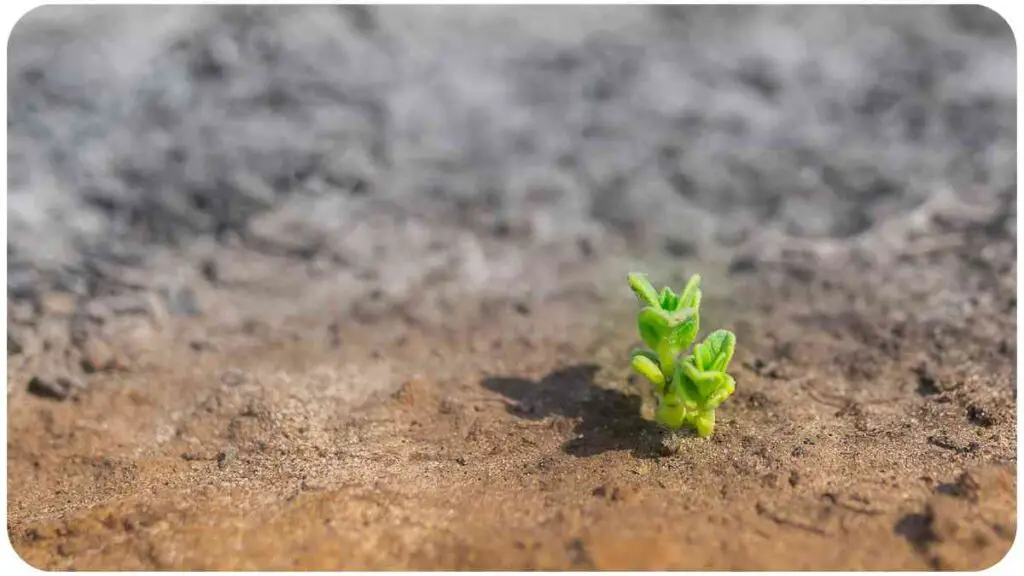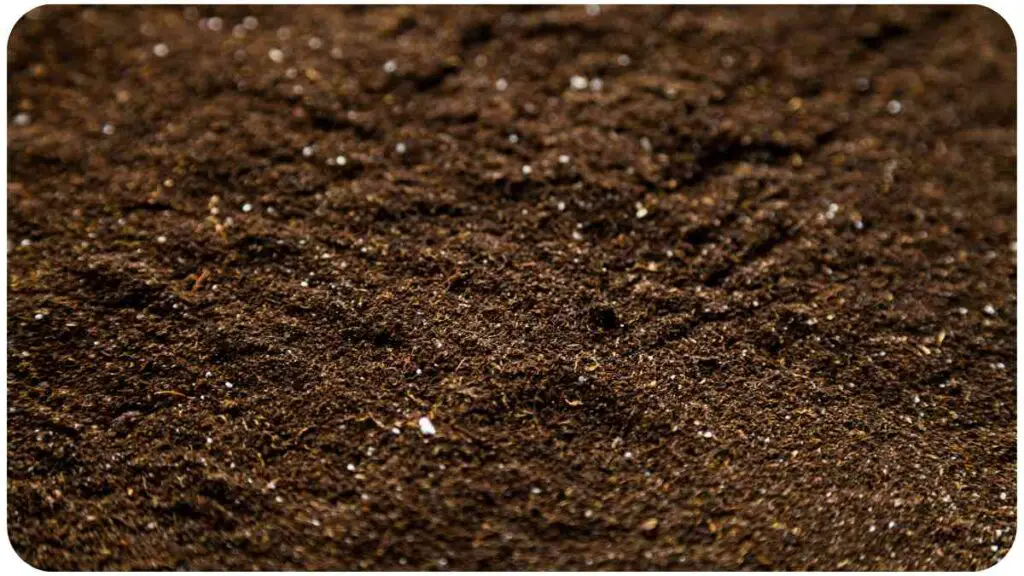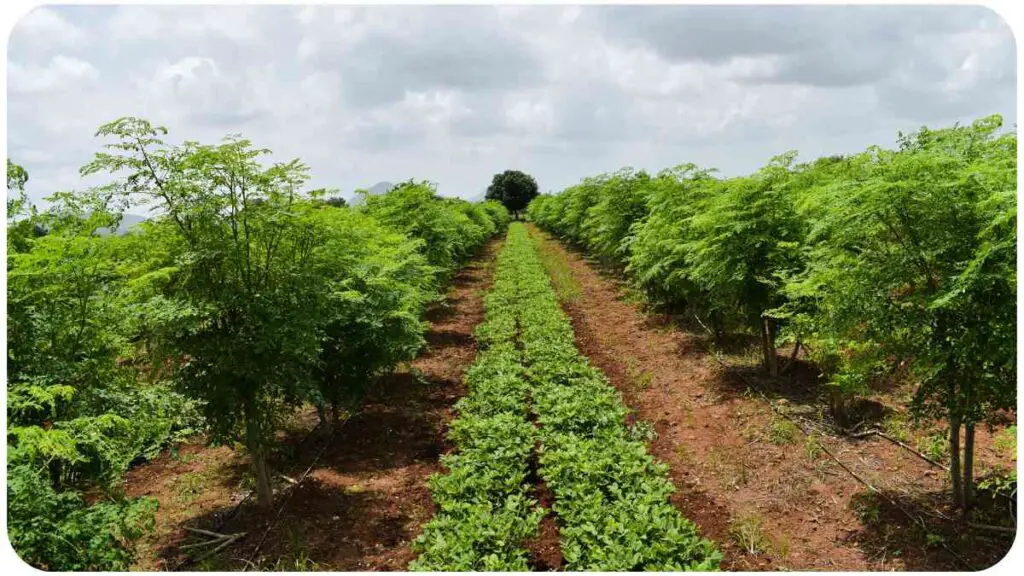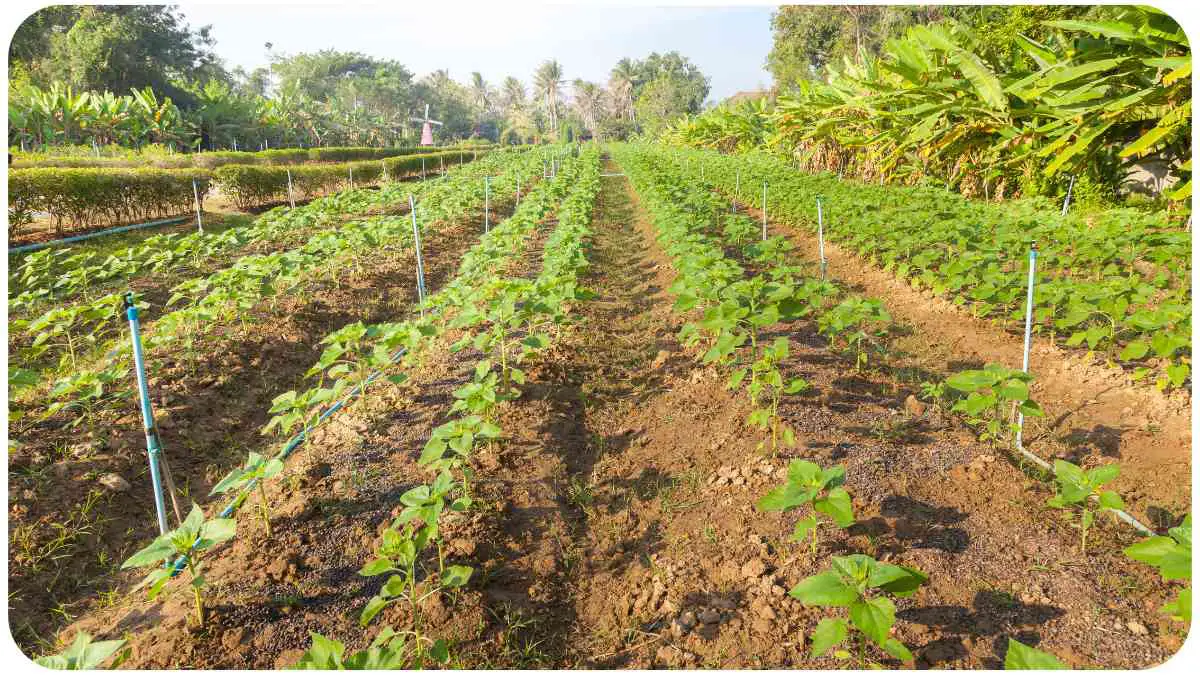Welcome to the world of gardening, where the health of your plants starts with the vitality of your soil. In this comprehensive guide, we’ll delve into the essential tips and techniques for rejuvenating your garden soil.
Whether you’re a seasoned gardener or just starting out, understanding and improving your soil health can make a significant difference in the success of your garden.
| Takeaways |
|---|
| 1. Understand the importance of soil composition, microorganisms, and signs of poor soil health. |
| 2. Conduct regular soil tests to interpret nutrient levels and address imbalances. |
| 3. Embrace composting for soil enrichment, turning kitchen scraps and yard waste into valuable humus. |
| 4. Utilize mulching techniques to retain moisture, suppress weeds, and regulate soil temperature. |
| 5. Implement crop rotation, cover crops, and beneficial insects for holistic soil improvement. |
| 6. Choose fertilizers wisely, considering labels, organic vs. synthetic options, and proper application. |
| 7. Optimize watering practices with methods like drip irrigation and rainwater harvesting. |
| 8. Foster a healthy garden ecosystem through the integration of beneficial insects and aeration. |
| 9. Address soil compaction issues with tools like core aerators and deep-rooting plants. |
| 10. Troubleshoot common soil problems, from nutrient deficiencies to soil-borne diseases. |
| 11. Draw inspiration from success stories and lessons learned by experienced gardeners. |
| 12. Further reading resources provide additional insights into rejuvenating and maintaining your garden soil. |
Understanding Soil Health
2.1 Importance of Soil Composition
| Soil Component | Role in Soil Health |
|---|---|
| Sand | Aeration and drainage improvement |
| Silt | Nutrient retention |
| Clay | Soil structure enhancement |
| Organic Matter | Microbial activity promotion |
2.2 Signs of Poor Soil Health

| Indicators | Possible Causes |
|---|---|
| Stunted plant growth | Nutrient deficiency |
| Water runoff | Compacted soil |
| Yellowing of leaves | Imbalanced pH levels |
| Increased pest infestation | Poor microbial activity |
2.3 The Role of Microorganisms
| Microorganism | Contribution to Soil Health |
|---|---|
| Bacteria | Nitrogen fixation, organic matter decomposition |
| Fungi | Nutrient cycling, mycorrhizal associations |
| Protozoa | Predation on bacteria, nutrient release |
| Nematodes | Organic matter decomposition, nutrient cycling |
Assessing Your Garden Soil
Selecting the right gloves is crucial for gardening enthusiasts. From protective to breathable options, this guide ensures your hands stay safe and comfortable during every gardening session.
3.1 Conducting a Soil Test
| Soil Test Component | Frequency | Recommended Tools |
|---|---|---|
| pH Levels | Annually | Soil pH meter or testing kit |
| Nutrient Levels | Every 2-3 years | Soil testing laboratory |
| Soil Texture | Periodically | Simple jar test |
3.2 Interpreting Test Results
Interpreting your soil test results is crucial for determining necessary amendments. If pH levels are off, consider adding lime for acidic soil or sulfur for alkaline soil. For nutrient deficiencies, organic amendments or targeted fertilizers can address specific needs.
3.3 Addressing Soil Imbalances
| Soil Imbalance | Amendments and Solutions |
|---|---|
| Nitrogen Deficiency | Add organic matter, use nitrogen-rich fertilizers |
| Phosphorus Deficiency | Apply phosphorus-containing fertilizers |
| Potassium Deficiency | Use potash-rich fertilizers |
| Imbalanced pH Levels | Lime for acidic soil, sulfur for alkaline soil |
Composting for Soil Enrichment

4.1 Creating a Compost Bin
| Compost Bin Types | Advantages |
|---|---|
| Open Pile | Easy to maintain, requires less effort |
| Tumbler | Faster decomposition, less odor |
| Worm Composting | Ideal for small spaces, nutrient-rich |
4.2 What to Include in Your Compost
Achieving the perfect compost mix involves balancing “green” (nitrogen-rich) and “brown” (carbon-rich) materials. Kitchen scraps, coffee grounds, and grass clippings provide nitrogen, while leaves, straw, and shredded newspaper contribute carbon.
Discover the ideal frequency for using the Miracle-Gro Garden Feeder. Achieve optimal plant nutrition and growth by following these expert recommendations on when and how to apply this popular garden supplement.
4.3 Turning and Maintaining Compost
Regularly turning your compost helps aerate the mixture, speeding up decomposition. Maintain a balanced ratio of green to brown materials, keep the compost moist but not waterlogged, and witness the transformation into nutrient-rich humus.
Mulching Techniques
5.1 Benefits of Mulching
| Mulching Benefits | Impact on Soil Health |
|---|---|
| Moisture Retention | Reduced water evaporation |
| Weed Suppression | Minimized competition for nutrients |
| Temperature Regulation | Insulation against extreme temperatures |
| Soil Erosion Prevention | Protects topsoil from water runoff |
5.2 Types of Mulch
| Mulch Types | Characteristics |
|---|---|
| Organic Mulch | Decomposes over time, enriches soil |
| Inorganic Mulch | Long-lasting, effective weed control |
| Living Mulch | Ground cover plants that enhance soil |
5.3 Applying Mulch Correctly
Apply a layer of mulch 2-4 inches deep, ensuring it doesn’t touch plant stems. Mulching too close to plants can lead to moisture-related issues and pest harborage. Replenish mulch as needed to maintain the desired depth.
Unearth the secrets to selecting the best soil for gardening. This insightful guide outlines the essential factors to consider, ensuring your plants thrive in nutrient-rich and well-draining soil for a flourishing garden
Crop Rotation Strategies

6.1 Breaking Disease Cycles
| Disease-Resistant Crops | Rotation Cycle |
|---|---|
| Legumes | Every 2-3 years |
| Brassicas | Rotate every 3 years |
| Alliums | Rotate every 4 years |
6.2 Maximizing Nutrient Efficiency
Crop rotation optimizes nutrient use, preventing depletion of specific elements. Legumes, for example, fix nitrogen, benefiting subsequent crops. Plan rotations based on nutrient needs and growth characteristics.
6.3 Planning Your Crop Rotation
| Crop Rotation Plan | Example |
|---|---|
| Year 1: Tomatoes | Year 2: Beans or peas |
| Year 3: Leafy greens | Year 4: Root crops |
Integrating Cover Crops
7.1 Selecting Suitable Cover Crops
| Cover Crop Type | Benefits |
|---|---|
| Legumes (e.g., clover) | Nitrogen fixation, soil structure |
| Grasses (e.g., rye) | Erosion control, organic matter |
| Brassicas (e.g., mustard) | Biofumigation, pest control |
7.2 Improving Soil Structure
Cover crops with deep roots break up compacted soil, improving aeration and water infiltration. Their decomposition adds organic matter, enhancing overall soil structure.
7.3 When and How to Plant Cover Crops
Sow cover crops before or after the main growing season. Allow them to grow and then incorporate them into the soil before they flower and set seed. This practice enhances soil fertility and suppresses weeds.
Choosing the Right Fertilizers
8.1 Understanding Fertilizer Labels
| Fertilizer Label Components | Interpretation |
|---|---|
| N-P-K Ratio | Nitrogen, phosphorus, and potassium content |
| Micronutrients | Additional trace elements essential for plants |
| Application Instructions | Recommended usage rates and timing |
8.2 Organic vs. Synthetic Fertilizers
| Fertilizer Type | Advantages |
|---|---|
| Organic Fertilizers | Slow-release, improve soil structure |
| Synthetic Fertilizers | Rapid nutrient availability, precision |
8.3 Proper Fertilizer Application
Follow recommended application rates to avoid over-fertilization, which can harm plants and contribute to environmental pollution. Consider seasonal nutrient needs and adjust fertilizer application accordingly.
Explore the art of planting a vertical herb garden. Elevate your gardening experience with this step-by-step guide, offering innovative techniques for maximizing space while cultivating a diverse and aromatic herb collection.
Watering Strategies for Soil Health
9.1 Best Watering Practices
| Watering Method | Effectiveness |
|---|---|
| Drip Irrigation | Targeted water delivery, reduced evaporation |
| Soaker Hoses | Gentle watering for root absorption |
| Mulch Coverage | Minimizes soil moisture loss |
9.2 Avoiding Overwatering and Underwatering
Monitor soil moisture regularly. Overwatering can lead to root rot, while underwatering stresses plants. Adjust watering frequency based on weather conditions and plant needs.
9.3 Rainwater Harvesting Techniques
| Rainwater Harvesting System | Benefits |
|---|---|
| Rain Barrels | Collect and store rainwater |
| Rain Gardens | Direct rainwater to garden areas |
| Permeable Surfaces | Allow rainwater infiltration |
Beneficial Insects and Soil Health
10.1 Attracting Beneficial Insects
| Beneficial Insect | Role in Garden Ecosystem |
|---|---|
| Ladybugs | Natural predators of aphids and mites |
| Lacewings | Feed on garden pests, including caterpillars |
| Ground Beetles | Consume soil-dwelling pests like larvae |
10.2 Natural Pest Control
Attracting beneficial insects creates a balanced ecosystem, reducing the need for chemical pesticides. Planting diverse flowers and providing habitat elements like water sources and shelter encourages these allies.
After a satisfying gardening session, learn effective tips on cleaning feet for a refreshing and hygienic experience. This quick guide ensures that your post-gardening routine keeps you clean, comfortable, and ready for your next green adventure.
10.3 Creating Insect-Friendly Environments
| Garden Design Tips | Creating a Haven for Beneficial Insects |
|---|---|
| Plant diverse flowers | Provide water sources |
| Use companion planting | Integrate plant diversity |
| Minimize pesticide use | Create shelters like rock piles |
Aeration and Soil Oxygenation
11.1 The Importance of Aeration
| Aeration Benefits | Impact on Soil Health |
|---|---|
| Improved water uptake | Enhanced root growth |
| Reduced soil compaction | Increased microbial activity |
| Prevention of thatch buildup | Improved nutrient absorption |
11.2 Tools and Techniques for Aeration
| Aeration Tools | Recommended Usage |
|---|---|
| Core Aerators | Ideal for compacted soil |
| Spike Aerators | Effective for minor compaction |
| Manual Aerating Shoes | Small-scale aeration for specific areas |
11.3 Frequency of Aeration
Perform aeration annually, preferably in the early growing season. High-traffic areas and heavily compacted soils may benefit from more frequent aeration.
Dealing with Soil Compaction
12.1 Identifying Compacted Soil
| Signs of Soil Compaction | Soil Probe Test Results |
|---|---|
| Poor drainage | Difficulty pushing probe |
| Stunted plant growth | Resistance encountered |
| Surface crusting | Limited probe penetration |
12.2 Remediation Strategies
| Soil Compaction Remedies | Techniques and Tools |
|---|---|
| Core Aeration | Loosens soil and improves drainage |
| Adding Organic Matter | Enhances soil structure |
| Deep Rooting Plants | Breaks up compacted layers |
12.3 Prevention Measures
Regularly incorporate organic matter into your soil to improve its structure and reduce the likelihood of compaction. Avoid working in wet soil, as this can lead to compaction.
Troubleshooting Common Soil Issues
13.1 Nutrient Deficiency Symptoms
| Nutrient Deficiency | Visual Symptoms in Plants |
|---|---|
| Nitrogen | Yellowing of leaves, stunted growth |
| Phosphorus | Purple or red discoloration on leaves |
| Potassium | Browning or yellowing leaf edges |
13.2 Soil-Borne Diseases
| Common Soil-Borne Diseases | Symptoms and Control |
|---|---|
| Fusarium Wilt | Yellowing, wilting, use resistant varieties |
| Root Rot | Rotting roots, improve drainage |
| Pythium Blight | Damping off, proper watering practices |
13.3 Managing Weeds Effectively
| Weed Management Tips | Prevention and Control Strategies |
|---|---|
| Mulching | Suppresses weed growth |
| Hand Pulling | Remove weeds before they seed |
| Cover Crops | Outcompetes weeds for resources |
Success Stories from Gardeners
14.1 Overcoming Soil Challenges
| Gardener’s Challenge | Success Strategy |
|---|---|
| Acidic Soil | Regular lime applications, use of acid-loving plants |
| Compacted Soil | Incorporating organic matter, regular aeration |
| Nutrient Imbalance | Customized fertilization based on soil test results |
14.2 Achieving Bountiful Harvests
| Gardener’s Approach | Resulting Harvest Success |
|---|---|
| Companion Planting | Pest control, increased yield |
| Strategic Mulching | Reduced water usage, weed suppression |
| Diverse Crop Rotation | Balanced nutrient utilization, disease prevention |
14.3 Lessons Learned
| Gardener’s Insight | Key Takeaways |
|---|---|
| Patience is Key | Soil improvement takes time, be patient |
| Observation is Crucial | Regularly monitor plants for early signs |
| Sustainable Practices | Embrace eco-friendly and sustainable gardening |
Conclusion
In this journey of soil rejuvenation, you’ve discovered a myriad of strategies and techniques to enhance the health of your garden soil. Remember, every garden is unique, and adapting these tips to your specific conditions is key.
By understanding your soil, implementing enriching practices, and learning from the experiences of successful gardeners, you’re well on your way to cultivating a thriving and vibrant garden. So, roll up your sleeves, get your hands dirty, and let the transformation begin.
Happy gardening!
Further Reading
- 7 Tips for Rejuvenating Neglected Gardens
- Explore practical advice on revitalizing neglected gardens, covering topics from soil improvement to plant care.
- Improve Garden Soil – Grow a Good Life
- Dive into this comprehensive guide offering insights into improving your garden soil, with a focus on sustainable and practical methods.
- How to Rejuvenate Plants in Your Garden – Richgro
- Richgro provides valuable tips on rejuvenating plants, including soil enrichment strategies and overall garden health improvement.
FAQs
How often should I conduct a soil test?
Regular soil testing is recommended every 2-3 years. This ensures you have up-to-date information on your soil’s nutrient levels and pH, guiding appropriate amendments.
What are the signs of poor soil health?
Common signs include stunted plant growth, water runoff, yellowing of leaves, and increased pest infestation. Identifying these indicators helps address underlying soil issues.
Can I use synthetic fertilizers instead of organic ones?
Both types have their advantages. Organic fertilizers improve soil structure, while synthetic fertilizers offer rapid nutrient availability. Consider your gardening goals and preferences when choosing.
How deep should I apply mulch?
Apply mulch 2-4 inches deep around your plants, ensuring it doesn’t touch the stems. This depth helps retain moisture, suppress weeds, and regulate soil temperature effectively.
What is the best watering method for my garden?
Drip irrigation is a highly effective method for targeted water delivery, reducing evaporation and ensuring plants receive adequate moisture without wastage.

Hi! My name is Hellen James, and I’m here to help you with your home-maintenance needs. Whether it’s building a better yard or just trying to fix a garden—I can show you how.


